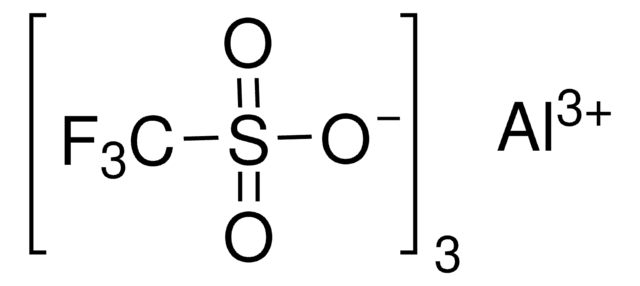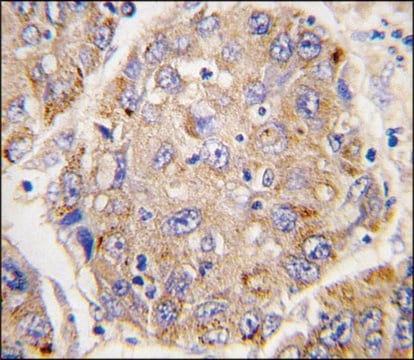Alle Fotos(1)
Wichtige Dokumente
25970
3-Chlor-phenylhydrazin -hydrochlorid
≥97.0% (AT)
Anmeldenzur Ansicht organisationsspezifischer und vertraglich vereinbarter Preise
Alle Fotos(1)
About This Item
Lineare Formel:
ClC6H4NHNH2 · HCl
CAS-Nummer:
Molekulargewicht:
179.05
Beilstein:
3565828
EG-Nummer:
MDL-Nummer:
UNSPSC-Code:
12352100
PubChem Substanz-ID:
Empfohlene Produkte
Assay
≥97.0% (AT)
Form
solid
mp (Schmelzpunkt)
240-245 °C (dec.) (lit.)
SMILES String
Cl[H].NNc1cccc(Cl)c1
InChI
1S/C6H7ClN2.ClH/c7-5-2-1-3-6(4-5)9-8;/h1-4,9H,8H2;1H
InChIKey
CRRIAWUJYMLJOE-UHFFFAOYSA-N
Suchen Sie nach ähnlichen Produkten? Aufrufen Leitfaden zum Produktvergleich
Anwendung
3-Chlorophenylhydrazine hydrochloride has been used in the preparation of:
- 1-(3-chlorophenyl)-3,5-diphenyl-1H-pyrazolo[4,3-c]quinolin-4(5H)-one
- 11-(3-chlorophenyl)-9-phenyl-5,6-dihydro-4H,11H-benzo[i,j]- pyrazolo[3,4-b]quinolizin-8-one
- 1-(3-chlorophenyl)-3-(cyclohexyl)-5-(4-phenoxy phenyl)pyrazole
Signalwort
Danger
H-Sätze
Gefahreneinstufungen
Acute Tox. 4 Oral - Resp. Sens. 1
Lagerklassenschlüssel
11 - Combustible Solids
WGK
WGK 3
Flammpunkt (°F)
Not applicable
Flammpunkt (°C)
Not applicable
Persönliche Schutzausrüstung
dust mask type N95 (US), Eyeshields, Faceshields, Gloves
Hier finden Sie alle aktuellen Versionen:
Besitzen Sie dieses Produkt bereits?
In der Dokumentenbibliothek finden Sie die Dokumentation zu den Produkten, die Sie kürzlich erworben haben.
Akihiko Tanitame et al.
Bioorganic & medicinal chemistry, 12(21), 5515-5524 (2004-10-07)
The 4-piperidyl moiety and the pyrazole ring in 1-(3-chlorophenyl)-5-(4-phenoxyphenyl)-3-(4-piperidyl)pyrazole 2, which has previously shown improved DNA gyrase inhibition and target-related antibacterial activity, were transformed to other groups and the in vitro antibacterial activity of the synthesized compounds was evaluated. The
Ring closure reactions of 3-arylhydrazonoalkyl-quinolin-2-ones to 1-aryl-pyrazolo [4, 3-c] quinolin-2-ones.
Stadlbauer W and Hojas G.
Journal of Heterocyclic Chemistry, 41(5), 681-690 (2004)
Amina Othmani et al.
Environmental science and pollution research international, 26(25), 25969-25984 (2019-07-06)
This paper suggests a new alternative for the acceleration of dye removal by adopting alternating current instead of direct current in the treatment of methylene blue solutions and industrials effluents, using anodic oxidation on Pb/PbO2 and stainless steel (SS)/PbO2 anodes.
Unser Team von Wissenschaftlern verfügt über Erfahrung in allen Forschungsbereichen einschließlich Life Science, Materialwissenschaften, chemischer Synthese, Chromatographie, Analytik und vielen mehr..
Setzen Sie sich mit dem technischen Dienst in Verbindung.










